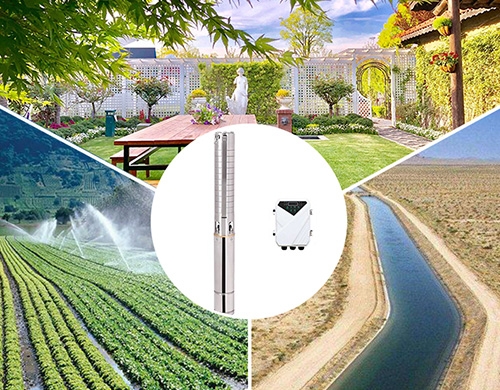In today’s world, where sustainability and energy efficiency are paramount, solar water pumps have emerged as a game-changing technology. These systems not only reduce reliance on traditional power grids but also provide a reliable and eco-friendly solution for water supply in both residential and agricultural settings. This article will guide you through the installation and usage of solar water pumps, ensuring you can harness the power of the sun to meet your water needs.
Why Choose a Solar Water Pump?
Solar water pumps offer numerous advantages over conventional water pumping systems. They are powered by the sun, making them an environmentally friendly and cost-effective solution. With no fuel required and minimal maintenance, these systems can last for over 20 years. Additionally, solar water pumps are independent of the electrical grid, ensuring a steady water supply even during power outages.
Applications of Solar Water Pumps

Solar water pumps are versatile and can be used for a variety of purposes:
- Agricultural Irrigation: Farmers can use solar water pumps to irrigate their fields, ensuring a consistent water supply regardless of power availability. This is particularly beneficial in areas with unreliable electricity grids.
- Residential Use: Solar water pumps can be used to supply water to homes, especially in remote areas where access to the electrical grid is limited.
- Emergency Preparedness: In case of natural disasters or power grid failures, solar water pumps can provide a reliable source of water.
Basic Components of a Solar Water Pump System
Before diving into the installation process, it’s essential to understand the basic components of a solar water pump system:
- Solar Panels: These convert sunlight into electricity, which powers the water pump.
- Water Pump: Typically a DC pump, designed to efficiently use the electricity generated by the solar panels.
- Controller: This regulates the operation of the pump, including functions like start, stop, and speed control.
- Battery Pack (optional): Stores excess electricity for use during nighttime or cloudy days.
- Water Level Sensor: Monitors the water level in the tank or source to prevent the pump from running dry.
Installation Process
- Site Selection: Choose a location that receives maximum sunlight exposure throughout the day. Ensure the site allows for proper orientation and angle adjustment of the solar panels.
- Component Assembly: Assemble the solar panels, controller, and pump according to the manufacturer’s guidelines. Ensure all connections are secure to avoid short circuits or loose connections.
- Water Source Connection: Depending on the type of water source (e.g., well, pond, river), ensure the pump’s inlet is below the water level to guarantee efficient water drawing.
- Solar Panel Installation: Install the solar panels in an unobstructed location, adjusting the tilt angle according to the local latitude to maximize sunlight capture.
- Controller Setup: Connect the solar panels and pump to the controller. Adjust settings as needed to ensure optimal operation.
Using Your Solar Water Pump
Once installed, using your solar water pump is straightforward:
- Turn On the Controller: Press the “ON” button on the controller to start the pump.
- Monitor Operation: Use the controller to monitor the pump’s operating status, including current, voltage, and power. Adjust the pump speed as needed to optimize energy use.
- Stop the Pump: When you need to stop pumping, press the “OFF” button on the controller. The pump will also automatically stop based on sunlight conditions or water level.

Maintenance Tips
To ensure the long-term efficiency of your solar water pump system, regular maintenance is crucial:
- Clean Solar Panels: Regularly clean the surface of the solar panels to maximize photoelectric conversion efficiency.
- Check Battery Status: If your system includes a battery pack, regularly check its voltage and capacity to ensure proper functioning.
- Inspect the Pump: Regularly check the pump’s operating status, including motor speed, noise, and water output, to identify and address potential issues.
Conclusion
Solar water pumps are a sustainable and reliable solution for water supply needs. By following the installation and usage guidelines outlined in this article, you can successfully set up and operate a solar water pump system. Not only will you contribute to a greener environment, but you’ll also enjoy the benefits of a consistent and cost-effective water supply.


























